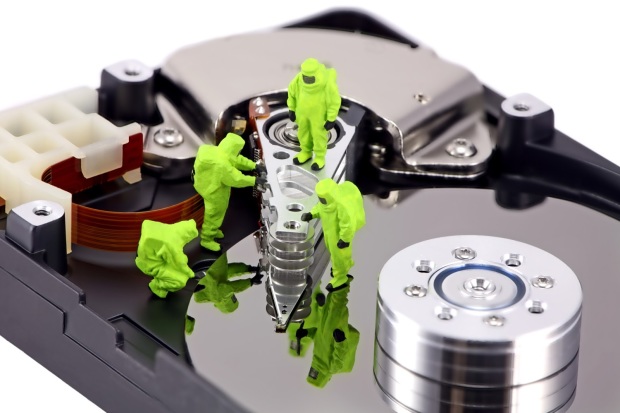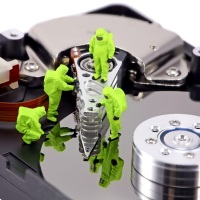My external hard drive is where I store all my important files such as photos, videos, and personal information. Most, if not all, of the files I store on that drive cannot be recreated, or would be very difficult and time-consuming to recreate. This is why I am always ensuring that drive is available for use, and protected.
Of course, as with most things in life, nothing lasts forever. This is especially true with hard drives. In this case, my external hard drive started to give me problems, causing me to be concerned for my data files.

Hard Drive Issues
I recently tried to create a copy of all my data on my external hard drive to another external hard drive. When it comes to my important files, I always like to keep multiple copies available at all times.
During the copy process the application I was using started to display cyclic redundancy check (CRC) errors for several files. Now a CRC can mean different issues on the drive, and scanning the external drive with Western Digital’s diagnostic tools recently indicated problems on the drive.
Given the fact that this particular hard drive does contain my important files, I didn’t want to take any chances, and decided to retire the drive from service. In order to do that I needed to make sure I can restore all my data files first.
Ensuring I Don’t Lost My Files
In order to completely ensure I don’t lose any of my files, I needed to perform a few steps before I retire my external hard drive:
- Purchase and setup a replacement external hard drive.
- Copy all the files I can from the current hard drive to the new hard drive.
- Restore any files from backup that couldn’t be copied to the new hard drive.
I have explained my backup process in different posts in the past, so performing the above steps didn’t take long.
1. Setup a replacement external hard drive
This step was the quickest one to perform. I bought a new 3TB external hard drive to replace my 2TB hard drive that contained all my files. The important point is that I bought a new hard drive that was a least as large as the one it is replacing.
Once I powered up the new hard drive I reformatted the drive as a single NTFS partition to accommodate files larger than 4GB – such as videos. By default, most hard drives are formatted as FAT32 (for compatibility reasons), but there is a 4GB file size limit on FAT32 drives.
At this point I ran Western Digital’s Diagnostic tool on the new external hard drive and the drive information indicated no problems with the drive. The drive was good to go.
2. Copy all files to the new hard drive
While I probably will scan the old external hard drive at some point to see if the problems can be corrected, it is important that I first recover as many files off the drive as possible. This avoids any problems that may occur during the scanning that could affect my data.
To perform the copy, I used an open source tool called Create Synchronicity that is small and I can setup jobs to perform simple mirroring between drives/folders. I use the application to schedule mirroring jobs between hard drives used by my media server.
While I can use Windows Explorer to copy the files, the problem is Windows Explorer will stop copying if an error occurred. XCOPY and ROBOCOPY can also do the job, but Create Synchronicity allows me to setup the copy job in a user interface – no command-line needed.
It took over 12 hours for the files to be copied from one drive to the other. Several files weren’t copied because of the CRC error, but I logged those files so I can restore them from a backup copy.
3. Restore files from a backup
When restoring files, I always have at least two options:
- Restore from a second external hard drive.
- Restore from my online backup through Backblaze.
In my case, the second external hard drive was store offsite, so I would have to wait a few days to retrieve the hard drive to restore the files. After reviewing the problem files, and realizing I could easily download the files, I decided to use option 2 and restore the files from Backblaze.
I have talked about the reasons I use Backblaze for backing up my files, and now I need to use their file restore service to actually restore some files.
I was able to easily restore the damaged files from Backblaze and within a day of purchasing a new hard drive, I had all my data available again.
